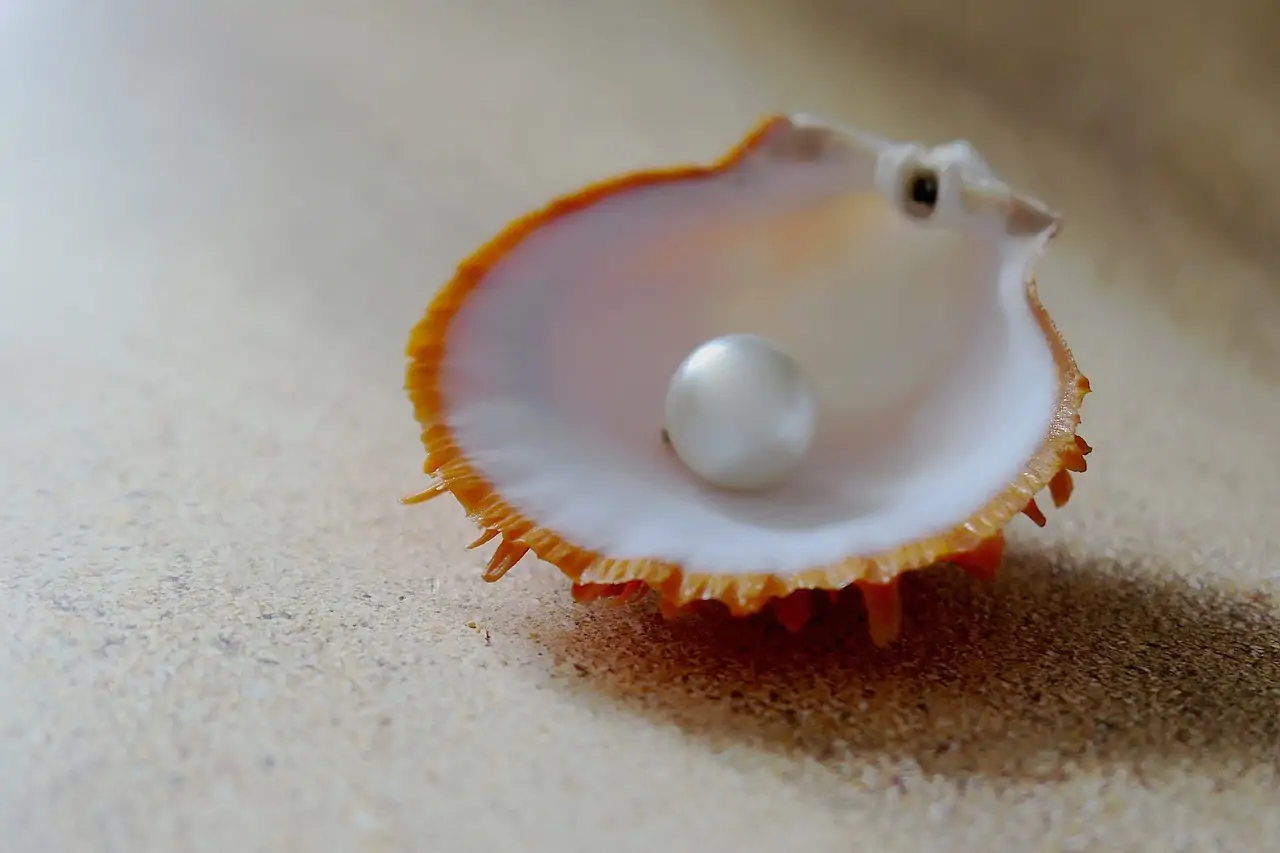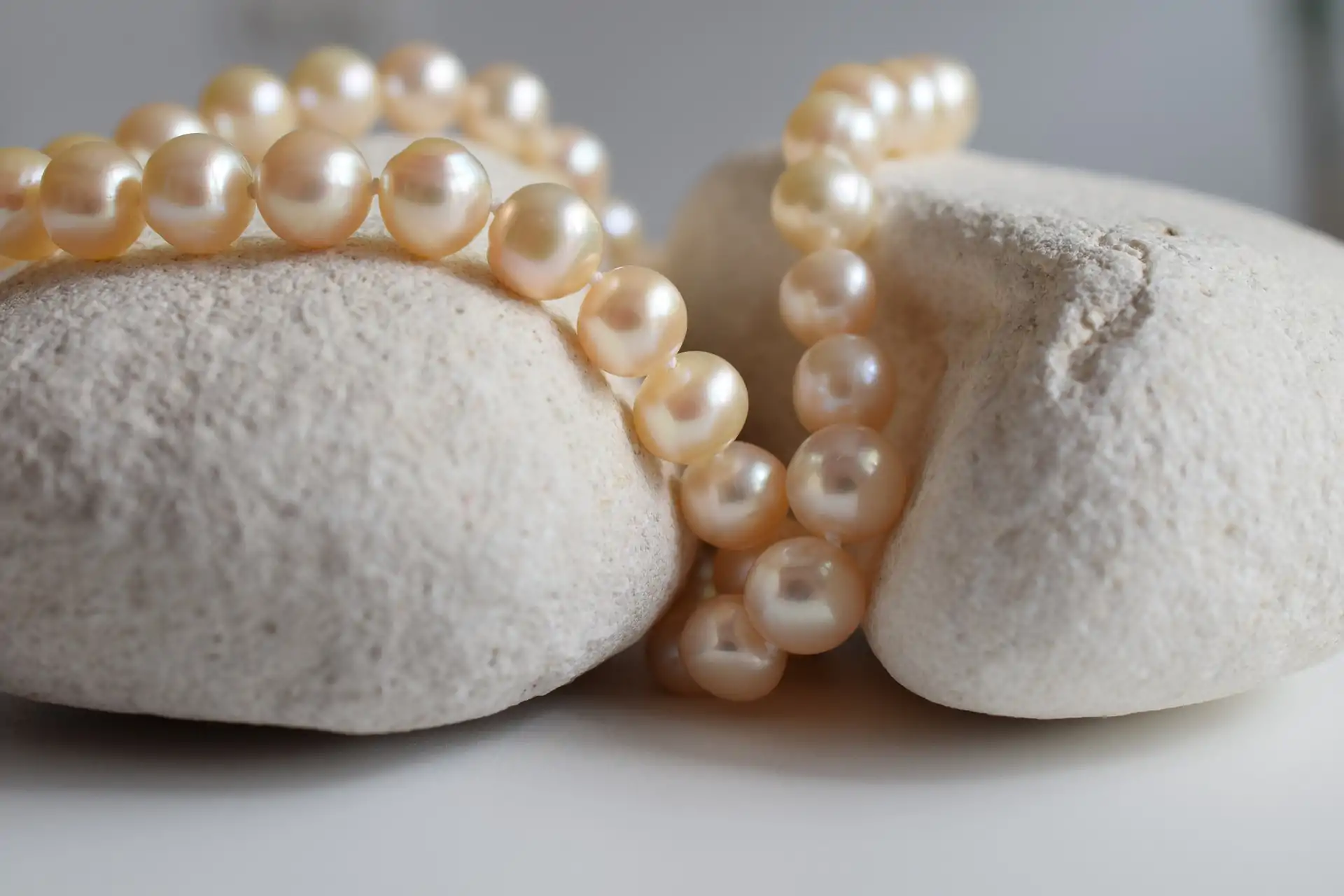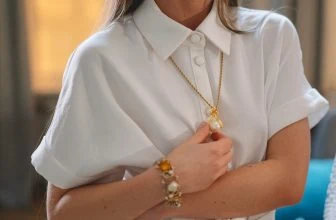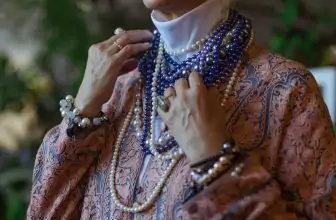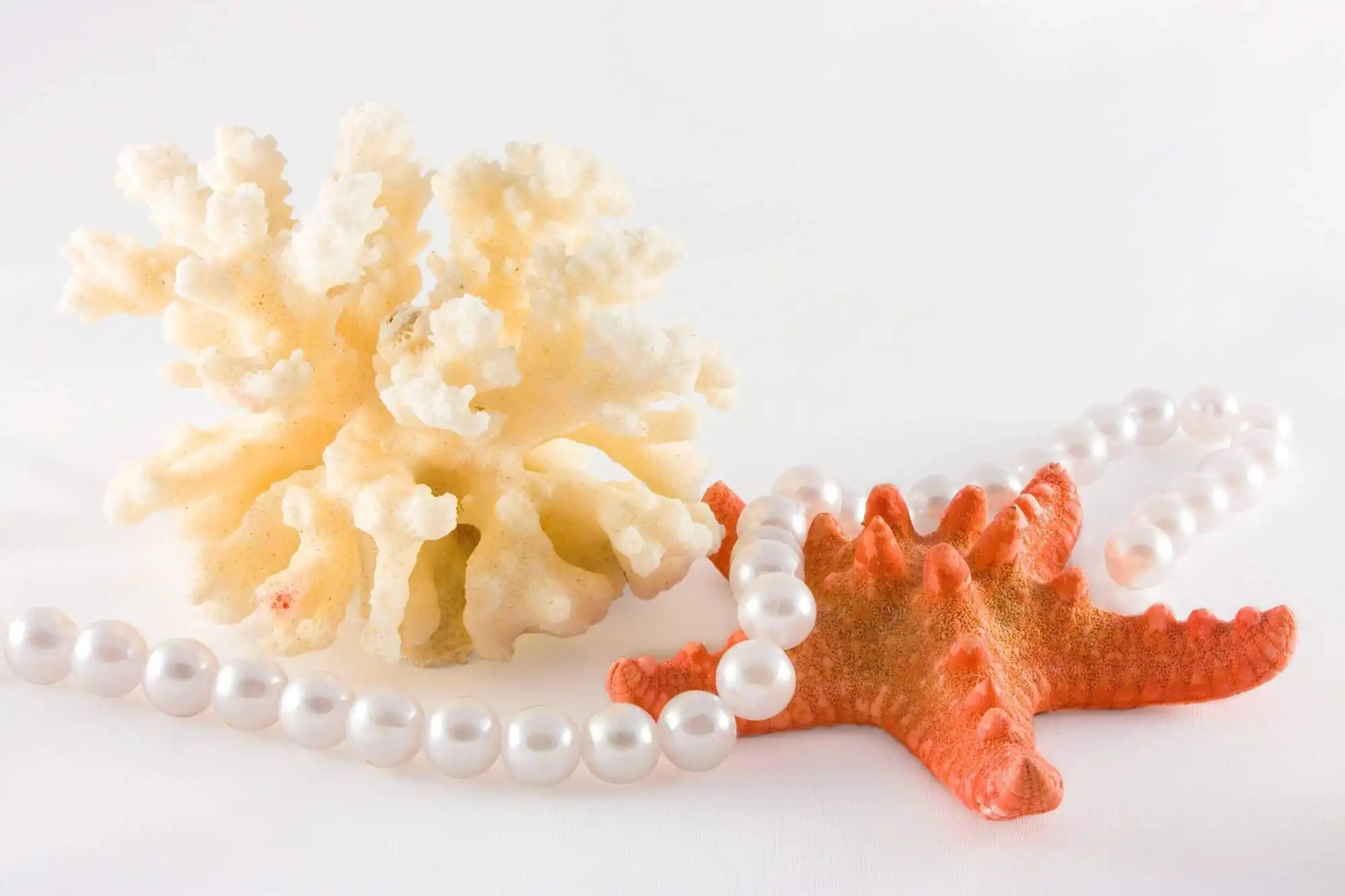
Table of Contents
Pearls, treasured for centuries, come in two main types: saltwater and freshwater. Saltwater pearls, often more valued, grow in oceans and stand out for their shine and perfect round shape. Freshwater pearls, found in lakes and rivers, are known for their variety in shape and color.
Let’s explore what makes each type of pearl special, from how they form to their role in fine jewelry, and the differences between them.
Saltwater vs Freshwater Pearls: Origin
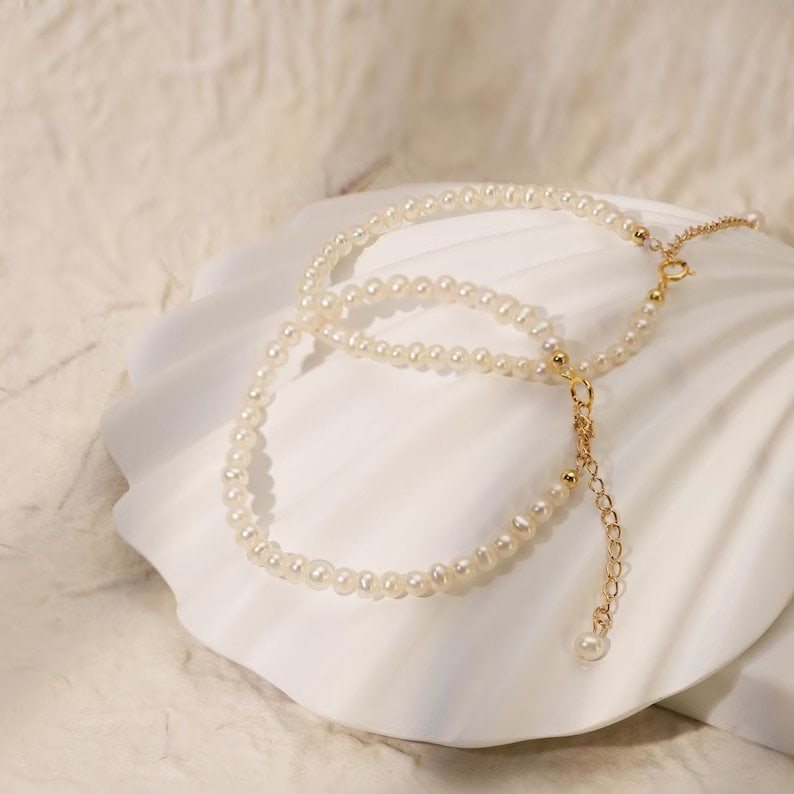
The origins of both freshwater and saltwater pearls, in tranquil freshwater or the expansive ocean, give them unique characteristics. These differences show in their appearance, symbolism, and value in the gemstone market.
Freshwater pearls grow in lakes, rivers, and ponds, mainly in China, the world’s largest producer. Mussels in these freshwater environments can produce multiple pearls each, leading to a greater supply. This abundance makes freshwater pearls more widely available and usually less expensive.
They vary in shape, size, and color, offering everything from traditional white to pastel hues. These pearls are typically less round and shiny than saltwater pearls, but their diverse shapes and colors are appealing.
Saltwater pearls, however, come from the ocean and include types like Akoya, Tahitian, and South Sea pearls. Oysters in saltwater usually make only one pearl each. This scarcity makes saltwater pearls rarer and often pricier.
Countries like Japan, Australia, and French Polynesia are famous for saltwater pearl farming. Valued for their superior luster and perfect roundness, saltwater pearls are classic favorites in fine jewelry.
Related Article: A comprehensive guide to buying pearls
Saltwater vs Freshwater Pearls: Nacre Quality
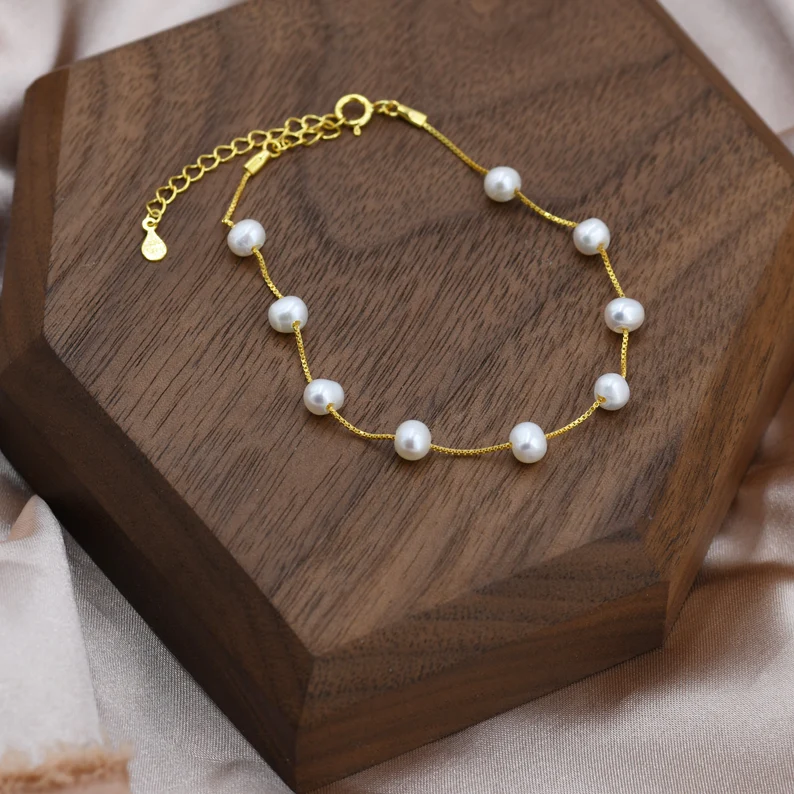
The quality of nacre, key to a pearl’s shine, strength, and beauty, differs notably between saltwater and freshwater pearls due to their distinct cultivation methods and the types of mollusks that produce them.
Saltwater pearls boast high nacre quality, largely because the oysters used in saltwater pearl farming often spend more time growing each pearl. This extended period allows the pearl to develop a thick nacre layer, the shiny substance that makes up the pearl.
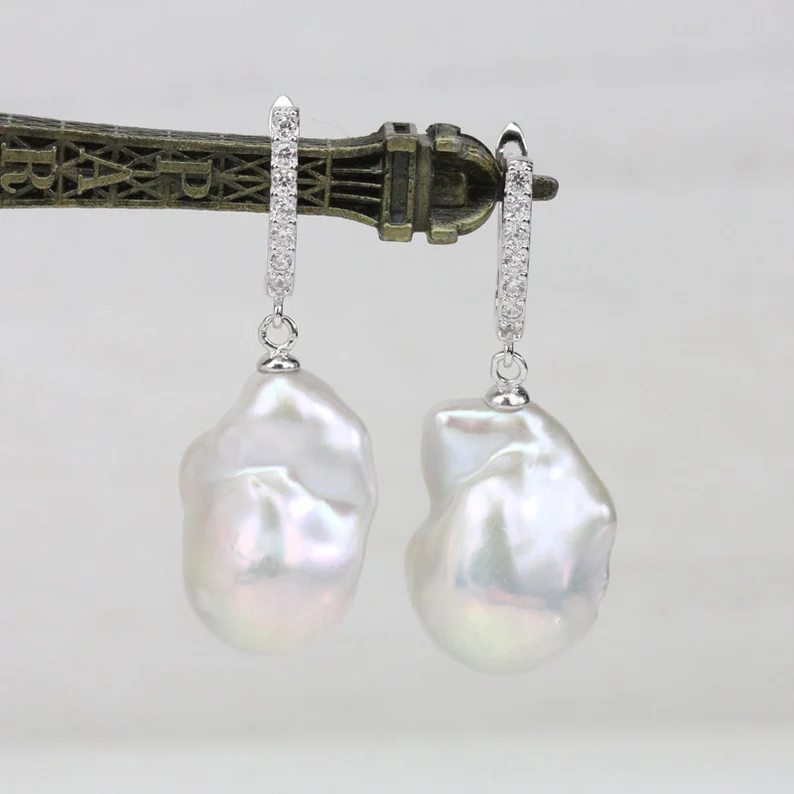
This thicker nacre layer gives saltwater pearls a deeper shine and iridescence and makes them more durable. Also, the nacre of saltwater pearls usually contains more aragonite, a mineral known for its luster, adding to their superior shine and smoothness.
Freshwater pearls, mostly produced by mussels, tend to have a thinner nacre layer. Since mussels can produce several pearls simultaneously, each pearl has less time to form a thick nacre layer. This results in freshwater pearls having a thinner nacre coating, often with less luster and iridescence than saltwater pearls.
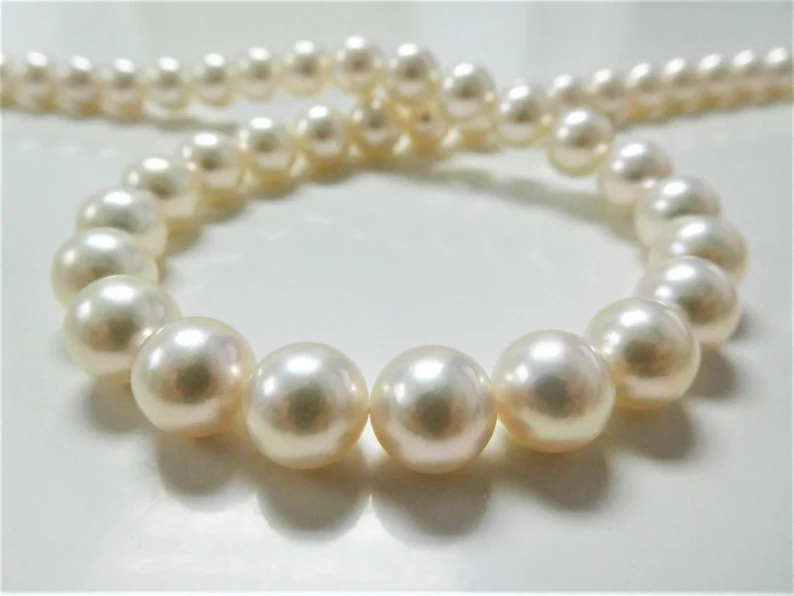
However, recent improvements in freshwater pearl farming have enhanced the nacre quality of these pearls. Many modern freshwater pearls now show a luster and richness that is comparable to saltwater pearls.
Saltwater vs Freshwater: Size and Shape
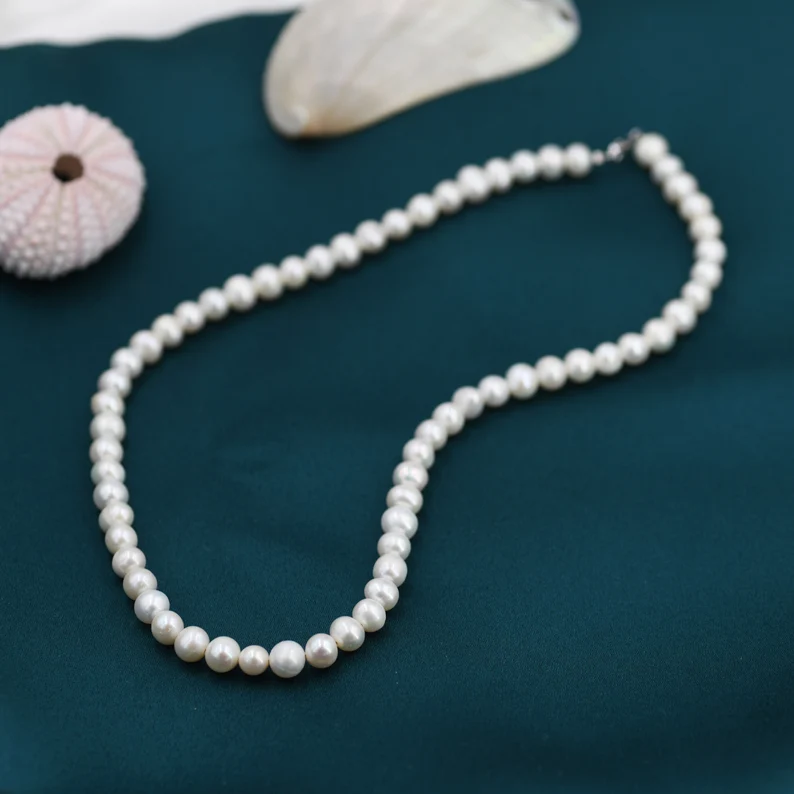
Saltwater and freshwater pearls differ significantly in size and shape, mainly due to their cultivation methods and the mollusks that create them.
Saltwater pearls, including Akoya, Tahitian, and South Sea types, usually have rounder, more consistent shapes. This uniformity comes from a bead-nucleation process in saltwater pearl farming. Farmers insert a round bead into the oyster, and the pearl forms around it.
This approach often leads to larger, more spherical pearls. Tahitian and South Sea pearls are notably large, while Akoya pearls are smaller but still round and well-proportioned. The controlled conditions in saltwater pearl farming help maintain this shape and size consistency.
In contrast, freshwater pearls, mainly grown in mussels, have a much wider variety of shapes and sizes. They are usually nucleated with a piece of tissue instead of a bead, resulting in different pearl shapes.
Freshwater pearls can be round, but they are often oval, button-shaped, baroque, or even irregular. Generally, they’re smaller than saltwater pearls, but their size can vary a lot. This range of shapes and sizes makes freshwater pearls unique and appealing for their varied and sometimes whimsical looks.
Saltwater vs Freshwater: Luster and Color
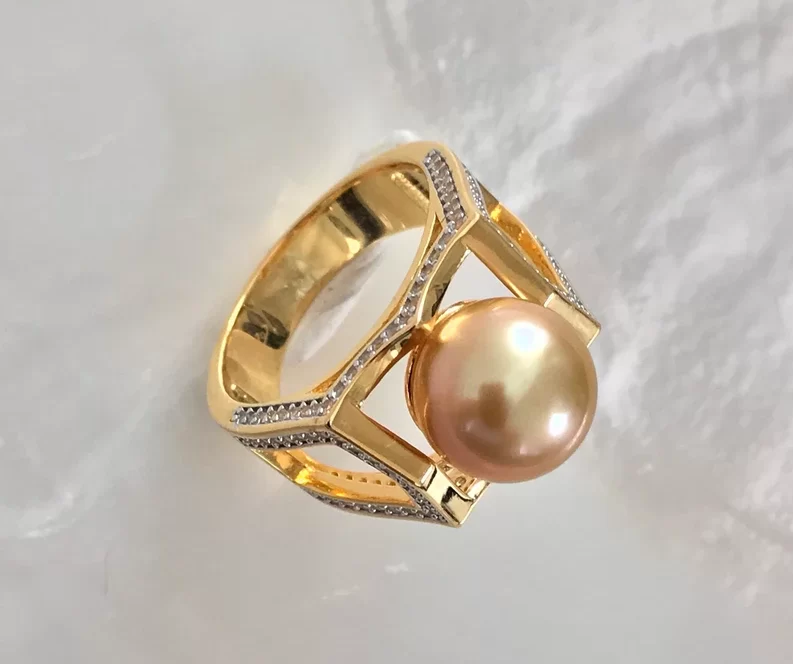
Saltwater and freshwater pearls differ notably in luster and color due to their environments and the mollusks that create them.
Saltwater pearls are famous for their exceptional luster, giving them a bright, mirror-like shine. This shine comes from the smooth, even nacre layers that oysters in saltwater environments deposit. The nacre in saltwater pearls, especially in Akoya, Tahitian, and South Sea varieties, is denser and more uniform, leading to a stronger shine.
In color, saltwater pearls vary. Akoya pearls are usually white or cream with silver or pink overtones. Tahitian pearls stand out with dark colors like black, green, and purple. South Sea pearls come in white, cream, and gold, with the gold ones being especially valued.
Freshwater pearls, though they can be lustrous, usually have a softer shine compared to saltwater pearls. This softer luster is due to the less regular nacre layering by freshwater mussels. Color-wise, freshwater pearls offer a wider range. They’re available in classic white and cream, as well as pastel shades like pink, lavender, and peach. This variety of colors makes freshwater pearls versatile for different jewelry styles.
Saltwater vs Freshwater: Value and Price
There are several reasons why saltwater pearls are considered more valuable than freshwater pearls. Compare the prices of these two pairs of similar-sized pearl studs. As you can see, the Akoya saltwater pearls are much more expensive than the freshwater ones.
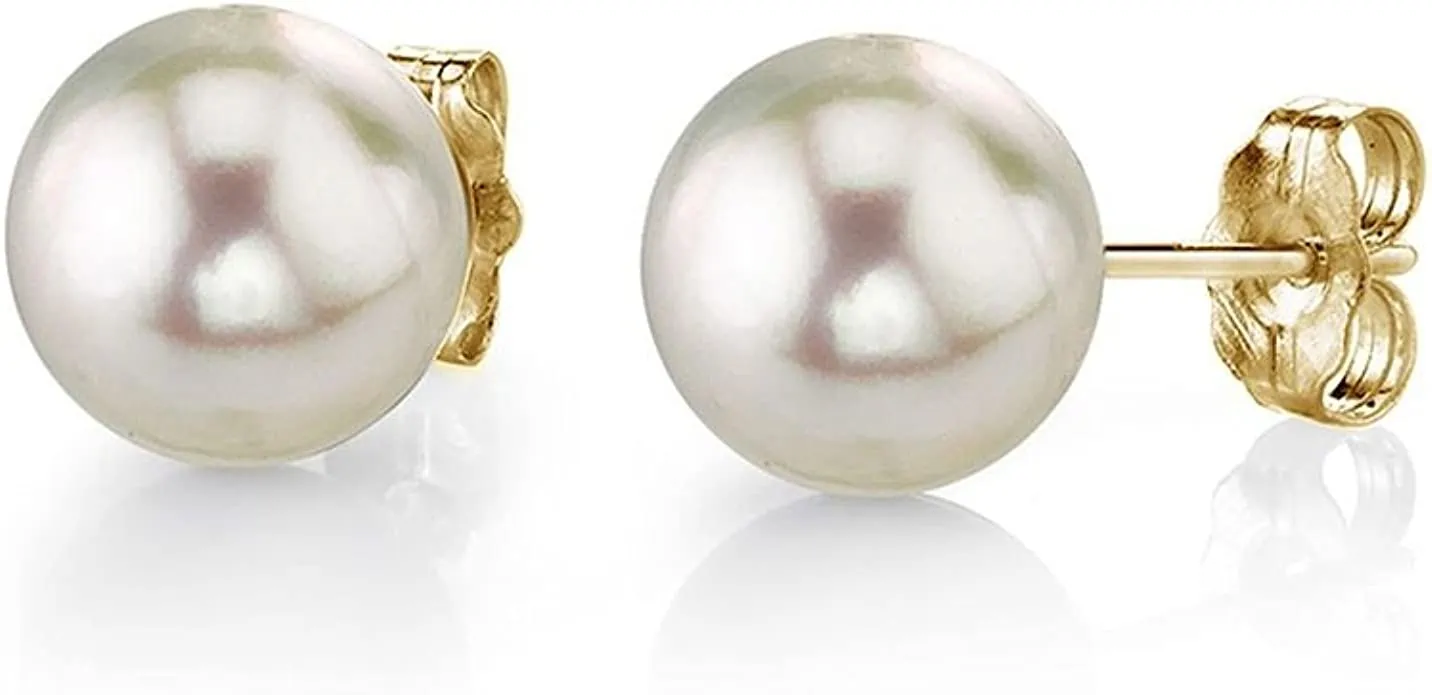
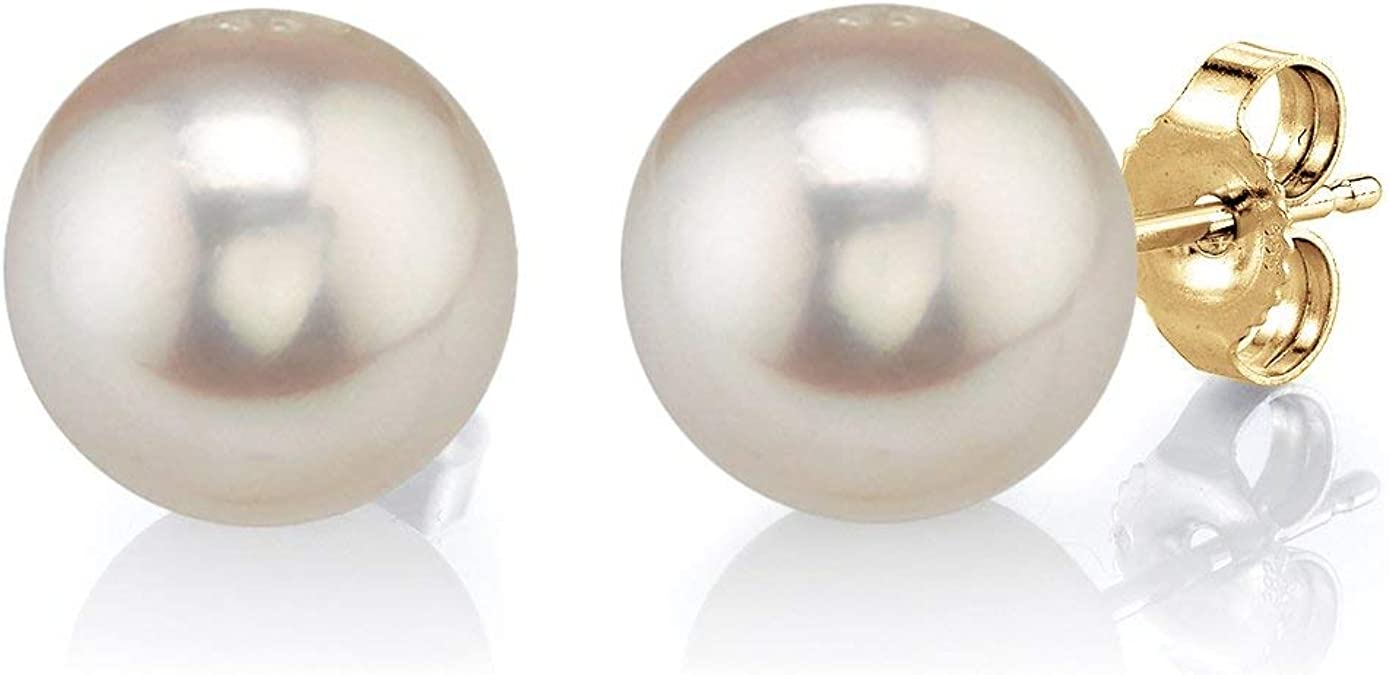
Saltwater and freshwater pearls differ in value and price due to factors like rarity, luster, size, shape, and how they are cultivated.
Saltwater pearls, including types like Akoya, Tahitian, and South Sea, usually cost more. Their rarity and the high shine and evenness they often have contribute to this higher price. Producing saltwater pearls takes a lot of work and time.
Farmers insert a single bead into each oyster and care for it for years, leading to the pearls’ roundness and impressive luster. Tahitian and South Sea pearls, large and with unique colors like South Sea’s golden tones and Tahitian’s dark, shimmering colors, are especially valued and fetch high prices.
In contrast, freshwater pearls are more common, mostly produced in China, making them generally less expensive. Freshwater pearl mussels can make several pearls each, resulting in more pearls. These pearls come in many shapes and colors but often don’t have the perfect roundness and shine of saltwater pearls.
Recent improvements in farming methods have raised the quality of freshwater pearls, closing the value gap with more expensive saltwater pearls.
Which Should I Choose?
Most people prefer saltwater pearls due to their higher luster and beauty, but today, freshwater pearls are almost just as lustrous and equally beautiful. If budget is a concern for you, opting for freshwater pearls is a sensible choice. You will still be able to get beautiful pearls at a much lower cost. What’s more, these pearls are also more durable.
The main deciding factors will be budget, appearance, and durability and you will have to find a compromise between these aspects that you are comfortable with. Because the differences between the two types of pearls are quite minute, we recommend freshwater pearls as a great place to begin your collection of pearl jewelry if you’re on a budget.
Where to Buy Freshwater and Saltwater Pearls
If you’re looking to add freshwater or saltwater pearls to your jewelry collection, here are some popular stores you can check out:
- Blue Nile is well-known for its fine jewelry, including a range of both freshwater and saltwater pearl jewelry. They offer elegantly designed pieces, often with authenticity certificates. Blue Nile focuses on high-quality, classic designs, making it a good choice for timeless pearl jewelry.
- James Allen also has a variety of pearl jewelry, emphasizing quality and craftsmanship. Their collection features both freshwater and saltwater pearls in different settings. Known for providing detailed information about the pearls’ origins and quality, James Allen is ideal for buyers who want in-depth knowledge about their purchase.
- Angara Jewelers, specializing in gemstone jewelry, offers a range of pearl pieces, including both freshwater and saltwater options. Their collection stands out for its unique and modern designs. Angara also allows customization, letting buyers personalize their pearl jewelry.
- Etsy is a marketplace for unique, handmade, or vintage pearl jewelry, hosting many sellers. It offers a wide variety of styles and designs in both freshwater and saltwater pearls. Since quality and authenticity can vary, it’s important for buyers to research and communicate with Etsy sellers.
- Amazon provides a wide selection of pearl jewelry for all budgets, including both freshwater and saltwater pearls. They offer everything from affordable to luxury options. Amazon’s platform is convenient, but buyers should be careful to check the quality and authenticity of the pearls.
Wrapping Up
Whether you opt for freshwater or saltwater pearls, each type has its own unique beauty and appeal. Freshwater pearls come in many shapes and colors, fitting different styles easily, while saltwater pearls are known for their classic look, perfect roundness, and shine.
Your choice depends on what you prefer, your style, and how much you want to spend. But no matter which you choose, pearls are timeless, adding elegance and sophistication to any jewelry collection.


